Tag: ventilation

Operative Lung Deflation During OLV with a DL-ETT
Operative lung deflation during lung deflation during one-lung ventilation (OLV) with a double-lumen endotracheal tube (DL-ETT) is faster when the operative lumen remains closed before pleural opening thus preventing it from... read more
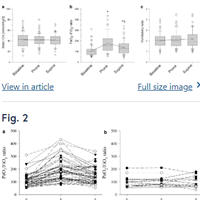
Prone Position in Intubated, Mechanically Ventilated COVID-19 Patients
During the COVID-19 pandemic, prone position has been widely adopted to treat mechanically ventilated patients with respiratory failure. The majority of patients improved their oxygenation during prone position, most likely... read more
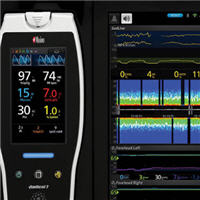
Effects of Ventilatory Rescue Therapies on the Cerebral Oxygenation of COVID-19 Patients
A new study by Masimo published in Critical Care evaluated the impact of a variety of rescue therapies on the systemic and cerebral oxygenation of mechanically ventilated COVID-19 patients suffering from acute respiratory... read more

24-Hour Esophageal pH Measurement in Mechanically Ventilated Children
The current study shows high incidence of gastroesophageal reflux on 24-hour esophageal pH-metry in mechanically ventilated children with medical diagnoses. The significance of this finding and its impact on ventilator-associated... read more

Effect of Helmet Noninvasive Ventilation vs. High-Flow Nasal Oxygen in Patients with COVID-19
Among patients with COVID-19 and moderate to severe hypoxemia, treatment with helmet noninvasive ventilation, compared with high-flow nasal oxygen, resulted in no significant difference in the number of days free of respiratory... read more
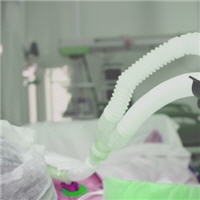
Early Tracheotomy Shortens ICU Stay and Lowers Risk of VAP
Compared with late tracheotomy, early intervention was associated with lower ventilator-associated pneumonia (VAP) rates and shorter durations of mechanical ventilation and ICU stay, but not with reduced short-term, all-cause... read more
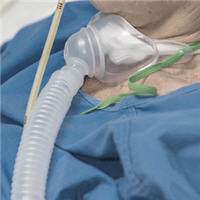
Ventilator Weaning and Discontinuation Practices for Critically Ill Patients
In this observational study of invasive mechanical ventilation discontinuation in 142 ICUs in Canada, India, the UK, Europe, Australia/New Zealand, and the US from 2013 to 2016, weaning practices varied internationally. Among... read more
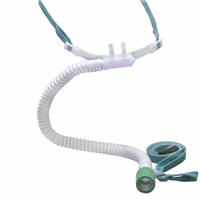
The Influence of Airflow Via High-Flow Nasal Cannula on Duration of Laryngeal Vestibule Closure
The purpose of this experimental study was to investigate the influence of airflow via high-flow nasal cannula (HFNC) on the duration of laryngeal vestibule closure (dLVC) and Penetration-Aspiration Scale (PAS) scores. 29... read more
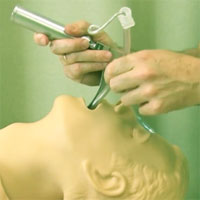
Timing of Intubation in Patients With COVID-19
The timing of intubation in hypoxemic patients with COVID-19 has been hotly debated. Early in the pandemic, there was a push to intubate early, driven by the effort to reduce transmission of the virus. With time, high-flow... read more

Body Mass Index and Risk for COVID-19
Obesity* is a recognized risk factor for severe COVID-19, possibly related to chronic inflammation that disrupts immune and thrombogenic responses to pathogens as well as to impaired lung function from excess weight. Obesity... read more

Effect of High-Dose Baclofen on Agitation-Related Events Among Patients With Unhealthy Alcohol Use Receiving Mechanical Ventilation
Among patients with unhealthy alcohol use receiving mechanical ventilation, treatment with high-dose baclofen, compared with placebo, resulted in a statistically significant reduction in agitation-related events. The primary... read more

Chloroquine/Hydroxychloroquine for Treating or Preventing COVID-19 Infection
When given along with azithromycin, hydroxychloroquine increased the risk of any unwanted effects, but made no difference to the risk of serious unwanted effects (1 study; 444 people). Compared with lopinavir plus ritonavir,... read more
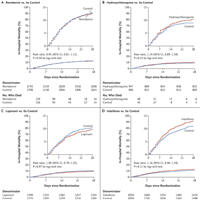
Antiviral Drugs in Hospitalised COVID-19 Patients
These remdesivir, hydroxychloroquine, lopinavir, and interferon regimens had little or no effect on hospitalized patients with Covid-19, as indicated by overall mortality, initiation of ventilation, and duration of hospital... read more
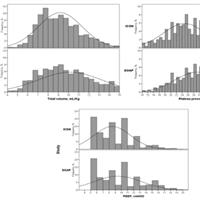
Temporal Changes in the Epidemiology, Management, and Outcome from ARDS
The frequency of and outcome from ARDS remained relatively stable between 2002 and 2012. Plateau pressure > 29 cmH2O and driving pressure > 14 cmH2O on the first day of mechanical ventilation but not tidal volume > 8... read more








